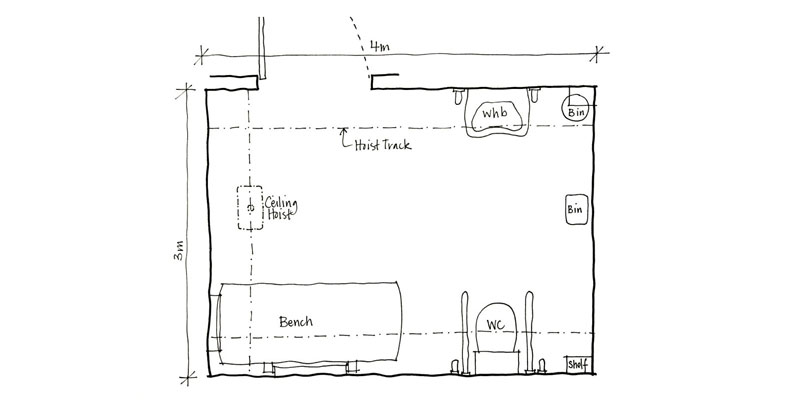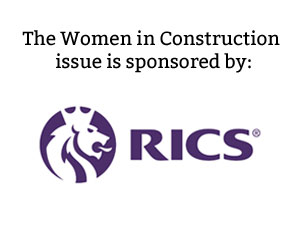Vaila Morrison is an architect with a passion for inclusive design and sustainability. She is not currently practicing as she is also a mum and carer to a young daughter with significant disabilities (attributed to an undiagnosed neurological condition), and a young son. Vaila is busy working on Our Inclusive Home, a project which encourages architects and designers to produce places and spaces which will welcome people of all needs.

“…Where a disabled person can’t go, their friends and family can’t go either, and that applies to houses and homes as well as public places. If there was a choice, who would choose a house that is inaccessible to their disabled or elderly friends and relatives?..”
My career background and the important of inclusive design
I am an architect turned blogger / campaigner and parent / carer. (I realise that’s all a bit of a mouthful!) Pre-children, most of my design experience has been in home design, from individual house alterations to large scale new build and refurbishment projects in the public and private sector.
I have to say my favourite type of project is the challenge of getting stuck into an individual home project. It’s extremely rewarding to see how much difference a bit of lateral thinking and sometimes just a few small changes can make to the way a house works for a family. Perhaps by releasing a bit more breathing space through changes to the layout, adding better storage to make rooms feel less cluttered or maybe extending out or up to add extra rooms.
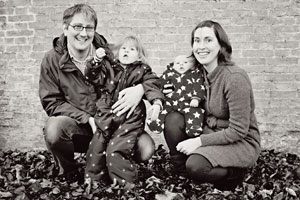
For me it’s important to take a broad view in design, think about how the building and spaces will be used now and in the future. Becoming a mum to a little girl with learning disabilities and limited mobility has reignited my passion for encouraging more widespread consideration of accessible and inclusive design from home design to big public spaces.
What we mean by ‘inclusive design’
‘Inclusive design’ is design that works for as many people as possible, for as wide a range of ages and abilities as possible. It’s not only about wheelchair access, grab rails or stair lifts.
For example, if we design for people who get around on wheels or with assistance devices full time, then spaces and places will not only become easier for people who use them part time, but also easier for a whole range of different needs too (i.e. parents with pushchairs, crawling babies, newly walking toddlers, and even those with wheelie suitcases etc…)
I’m also a keen advocate of sustainable design and I am passionate about improving the sustainability of our new and existing buildings, but by this I don’t just mean energy efficiency – that is just a part of what good sustainable design should be.
Sustainability is also about longevity, cost effectiveness and minimising waste. If a building is built with flexibility in mind from the start, that seems to me to be fundamental to the sustainability ethos, in that it will last longer, cost less over the lifetime and be changeable without being wasteful.
Background to Our Inclusive Home
I always anticipated getting back into architectural practice in some way after maternity leave, however when it became apparent that my daughter has complex needs, it became difficult to see how I could go back to ‘business as usual’.
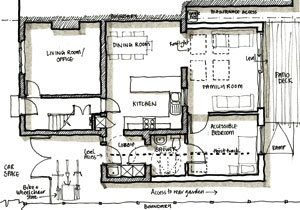
In an age where we are flooded with home design TV shows and magazines, there is barely a mention of how we could make our homes more accessible and yet also stylish. ‘Disabled adaptations’ are seen as something apart from ‘normal’ home design and are often an uncomfortable intervention with little consideration given to how they will look, and also how the adaptations will affect the whole household.
The lack of information and the lack of clear guidance on the process of getting correct advice and / or obtaining grant funding (a disabled facilities grant) inspired me to start a blog about our experience. Design has a huge influence on making our diverse society more inclusive for everyone, and a responsibility to acknowledge the huge number of people to whom the design of places, spaces and products can either include or exclude.
The project has evolved to being more than just about our house, but to gathering ideas, spreading awareness and campaigning about accessible design in general or where I find a gap in provision that I think needs to be highlighted – which, at the moment (for us), is primarily houses and toilets.
Practical challenges in the day to day life of a carer
There are many accessibility challenges to negotiate, starting in our own home which is a fairly typical Victorian layout, with narrow hallway, steps between rooms and bedrooms upstairs (hence our home adaptations project).
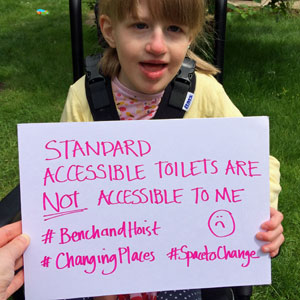
EJ is five and a half years old and is not able to use the toilet, so she wears nappies (pads). She cannot stand up without support so, for the time being, her pads have to be changed lying down. EJ outgrew the little baby change tables long ago and since then, we’ve been very limited on where she can change comfortably, hygienically and with dignity.
- Lying down on the toilet floor. Even the standard ‘disabled toilet’ doesn’t really have space for a wheelchair, a person lying down and a carer without squashing up underneath toilet bowls or sanitary bins. (The very idea of putting my little girl in this position, quite frankly, makes me ill…);
- Perch precariously on the baby change table (which we sometime still manage to do);
- Change in the car (which we quite often resort to doing); or
- Limit the time we are out and about to avoid changing at all.
The answer to this is a Changing Places toilet – a room with more space for one or two carers, a large height adjustable changing bench and a ceiling hoist.
I am ashamed to admit that until EJ started to outgrow the baby change tables it really hadn’t occurred to me that alternatives to a standard accessible toilet was missing. As a relatively new standard, I hadn’t heard of Changing Places toilets and that makes me wonder how many of my fellow architects know of it now (and know just how much a difference it can make)?
Changing Places toilets get a brief mention in the Building Regulations, but disappointingly – despite the Disability Discrimination Act (1995) and the more recent Equality Act (2010) – they’re still not a requirement in any category of building, just a recommendation, so are easily overlooked or considered non-essential.
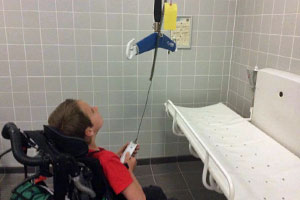
Extent of the problem
The best examples of accessible design seem to me to occur where there are regulatory frameworks in place, prompting people to think more to address the issues of access and inclusion. However, even then I think, very often, those procuring buildings and spaces don’t fully understand the benefits accessibility brings, and are basically ‘following the rules’ to get their project delivered.
There is a huge element of people historically just ‘making do’, accepting things as they are (and have always been) and trying to make the best of it rather than questioning whether there is a better solution. Better consultation with users is critical – if those people who need the facilities don’t speak out, then the people making the decisions or designing the buildings may not be aware of the need.
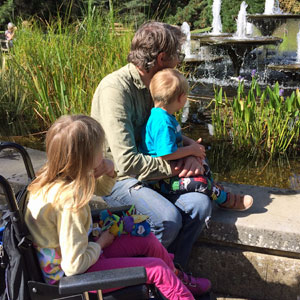
Where a disabled person can’t go, their friends and family can’t go either, and that applies to houses and homes as well as public places. If there was a choice, who would choose a house that is inaccessible to their disabled or elderly friends and relatives?
How smart design processes and thinking differently can help to minimise cost implications
In general terms it’s about thinking long term and future proofing your design by building in flexibility. In housing, designing to a standard like the Lifetime Homes Standard (similar to the new Building Regulation Category 2 Standard) will allow for future adaptation with minimum cost, disruption or waste. I liken this approach to a sort of 3D insurance policy.
In the public realm I’m hoping that hospitality and entertainment venues will begin to see the positive impact in upgrading their accessibility, rather than feeling it’s just an obligation to make ‘reasonable adjustments’ (as referred to in the Equality Act).
Often the focus of discussion around more standards and regulations can be negative. Quite understandably, building owners are concerned about cost and a change to the usual method … however, aside from the sense of inclusion an accessible venue will promote, there is the huge potential increase in patronage by disabled customers (and not forgetting their friends and family!).
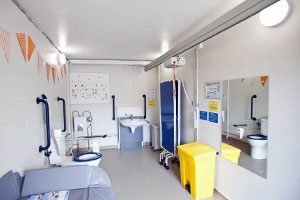
A fantastic example a business who has taken a progressive and innovative approach is Longdown Activity Farm, in Ashurst. The campaiging group, Hadley’s Heros, approached them with the suggestion and being really keen to make their farm accessible to all, they fundraised (over about five months including a dung heap challenge!) to raise funds for the loo in a converted shipping container. If small independent business can, everyone can.
People with greater accessibility needs, people like us, want to get out and about and enjoy our built environment, socialise, spend money as much as anyone else. Research tells us that already, up to 20% of the average business’ customer base is disabled, and the purple pound represents £212 billion to our economy – so, legislation and the moral argument aside, I would have thought it’s pretty clear there is value in making a business accessible.
Future plans for the campaign
I see my main challenge is to keep spreading the word, both in the design and construction industry and among users / consumers, that there really isn’t a separation between ‘inclusive design’ and ‘normal design’, that if society is serious about inclusion and equality, ALL design should be inclusive – it benefits all of us.
Now my kids are at nursery and school I’m planning to get much more involved in the professional side of things, and would like to try to help bring the voices of the campaigner friends I have made along the way to the decision makers in the building industry.
My first task is to comment on the following inquiry by that was launched by the Women and Equalities Select Committee: Disability and the Built Environment – the more voices who do the better! The closing date is Wednesday 12th October.
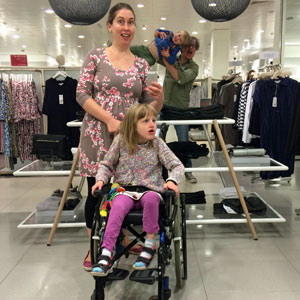
Why not discuss pram and buggy access in the context of the typical young pregnant couple embarking on their Grand Design? We need to shake of the perception that accessibility is niche and only for a narrow demographic. It’s not just for the aging population (which of course is a pretty massive demographic in itself and something we need to consider as a society). Inclusive design is about multi-generations, for young people and for families.
Essentially inclusive design is just well considered planning and flexibility. If you watch a few episodes of Grand Designs or read a home design magazine they are full of lovely wide open plan spaces, level garden decks etc. – lots of ideas that are completely compatible with inclusive design, and are ideal for wheelchair turning circles! An accessible home is simply an extension of what people are already aspiring to, with an extra layer of thought added. Good accessible design should be good design that sells.
How Womanthology readers can show their support
Everyone can help in this by simply talking about accessibility, spreading awareness and sharing information about the how inclusive design will help prevent the exclusion of some people and also provides benefits to everyone – a win / win!
A great way Womanthology readers can help would be to sign my fellow campaigner’s petition calling on a strengthening of planning legislation to ensure Changing Places toilets are included as part of the permission of large buildings.
http://www.theinclusivehome.co.uk/
https://twitter.com/@inclusivehome
https://www.facebook.com/theinclusivehome
https://www.linkedin.com/in/vailamorrison

